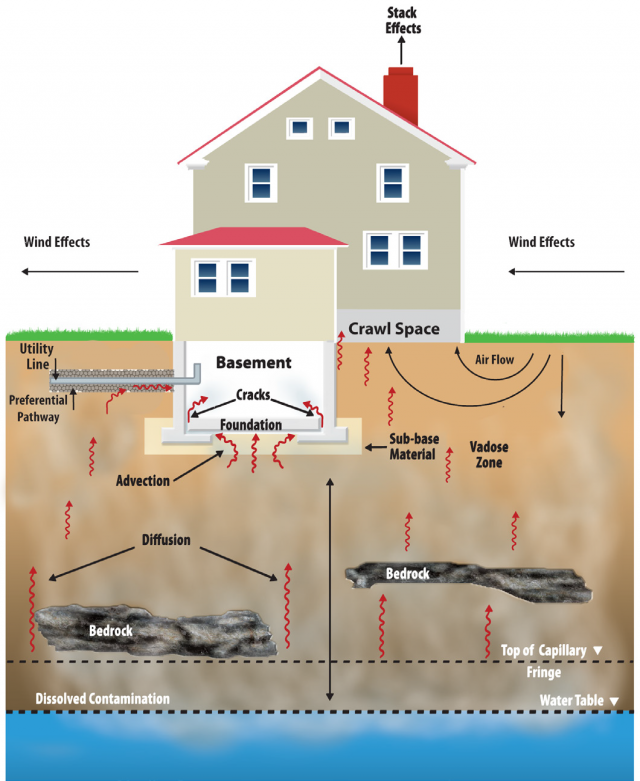Sporlan Valve Plant 1 Superfund Site, Washington, Franklin County, Missouri - Fact Sheet, July 2016
EPA Region 7 to Host Public Availability Session
The U.S. Environmental Protection Agency (EPA) Region 7 will host a Public Availability Session to provide a detailed explanation of the removal and cleanup of hazardous substances at the Sporlan Valve Plant 1 Superfund Site. The session will be held:
6:00 to 7:00 p.m.
The City of Washington
405 Jefferson Street
Washington, MO 63090
For more information, please contact:
Community Engagement Specialist
EPA Region 7
Lenexa, KS 66219
Email: freeman.tamara@epa.gov
EPA Region 7 is committed to providing reasonable accommodations to individuals with disabilities. To request a reasonable accommodation, please contact Jonathan Cooper at 1-800-223-0425, or by email at cooper.jonathan@epa.gov, at least one week in advance of the session. Speech or hearing impaired individuals should email or call using the local relay service.
SITE BACKGROUND
The Sporlan Valve Plant 1 Superfund Site was first developed as a refrigeration valve manufacturing facility in 1939. Continuous additions were constructed until 1968 when the final addition was added, bringing the total area of the factory to 80,000 square feet. In 2011, the brick building and concrete slab were demolished and the site was cleared. Over the course of the facility’s history, three above-ground storage tanks (ASTs), ranging in size from 200 to 2,000 gallons, were used to store trichloroethylene (TCE) for the plant’s degreasing processes. A 2,000-gallon AST was located outside and just north of the former manufacturing building, and was positioned on a concrete pad with no secondary containment. Three underground storage tanks (USTs) for storing fuel oil were also present at the site. The fuel oil USTs ranged in size from 2,000 to 10,000 gallons. It is believed that the use and storage of TCE at this site caused the contamination described in this fact sheet.
In October 2004, Parker Hannifin purchased the Sporlan Valve Company via an asset sale, which excluded the real property associated with the site. SV Land, LLC, purchased the real property associated with the site in December 2004.
SITE LOCATION
The site is located at 611 E. 7th Street, Washington, Franklin County, Missouri, 63090. The site is centrally located within the city of Washington and is approximately a half mile from the Missouri River.
CONTAMINANTS OF CONCERN
The primary contaminant of concern is trichloroethylene, an industrial solvent more commonly known as TCE. TCE poses a potential human health hazard to the central nervous system, kidney, liver, immune system, male reproductive system, and developing fetus. TCE is characterized by EPA as “carcinogenic in humans” by all routes of exposure.
TCE has been released to the ground at this site. Potentially occurring over several decades, the release has resulted in the contamination of the soil and shallow groundwater beneath the site. Existing monitoring well data indicates TCE contaminated groundwater is traveling away from the release point(s) in shallow groundwater, primarily towards the south and southeast.
Other contaminants of concern at this site include benzene, vinyl chloride and 1,1-DCE.
PROPOSED ACTION DESCRIPTION
Vapor intrusion is a way that volatile chemicals in soil and groundwater can enter and accumulate inside buildings. Volatile chemicals are a class of chemicals that tend to evaporate easily into the air. Normally, if these chemicals evaporate into outdoor air, they dissipate and do not pose health risks. Vapor mitigation systems that remove these vapors from home interiors can be a reliable and effective way to keep such vapors from accumulating, so that they do not pose health risks.
ADDITIONAL INFORMATION
If you have questions or need additional information, please contact:
Community Engagement Specialist
EPA Region 7
Lenexa, KS 66219
Email: freeman.tamara@epa.gov

